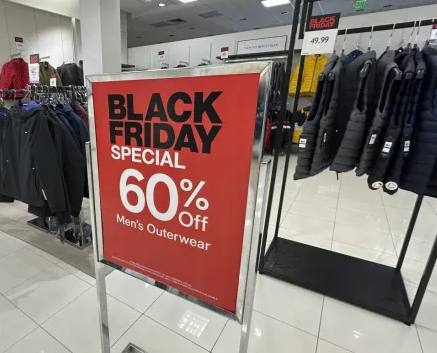An unprecedented number of US consumers took advantage of Black Friday sales this year, defying financial analysts’ initial expectations for this year’s Thanksgiving weekend.
According to an annual survey released on Nov. 28 by the National Retail Federation (NRF), around 200.4 million people shopped both in-person and digitally from Black Friday to Cyber Monday. Last year, the same weekend only saw 196.7 million shoppers.
“Shoppers exceeded our expectations with a robust turnout,” NRF President and CEO Matthew Shay said in a press release, commenting on the record amount of retail activity this year. “Retailers, large and small, were prepared to deliver safe, convenient and affordable shopping experiences with the products and services consumers needed, and at great prices.”
While the busiest shopping days of the year usually fall between Thanksgiving and Cyber Monday, many people weren’t expecting such a large turnout of clientele.
“Holy C R O W D,” customer Meredith Edwards said in a TikTok video, filming a festive, packed-to-the-brim view of the Tysons Corner Mall. “It is the Black Fridayest Black Friday in years and years. These stores need to post wait times for their lines and how can I get a fast pass. This is pure madness and mayhem with a side of insanity and as usual, I’m happy to be a part of it.”
Analysts, also surprised by this year’s staggering numbers yet eager to determine the cause, began to study trends in shopping data from both 2023 and past years, eager to determine the cause behind these staggering statistics.
“We’ve seen a very strategic consumer emerge over the past year where they’re really trying to take advantage of these [few] days, so that they can maximize on discounts,” Adobe Digital Insights analyst Vivek Pandya said in a press release.
According to Pandya, Black Friday 2023’s record turnout reflects a population of consumers who were more eager to spend money on non-essential goods this year than in 2022, when gas and food prices were “painfully high”. He predicts that a large portion of purchases made this year were more impulsive than usual, kicked into gear solely because of unusually heavy discounting.
“We do expect [consumer] growth to weaken because these discounts will weaken and they are dictating a lot in terms of buyer behavior this season,” Pandya said.
While it looks like this shopping spike has stopped growing for the rest of the holiday season, the record-breaking statistics this year have everyone – customers and financial analysts alike – looking forward to a future of ever-changing holiday shopping.




